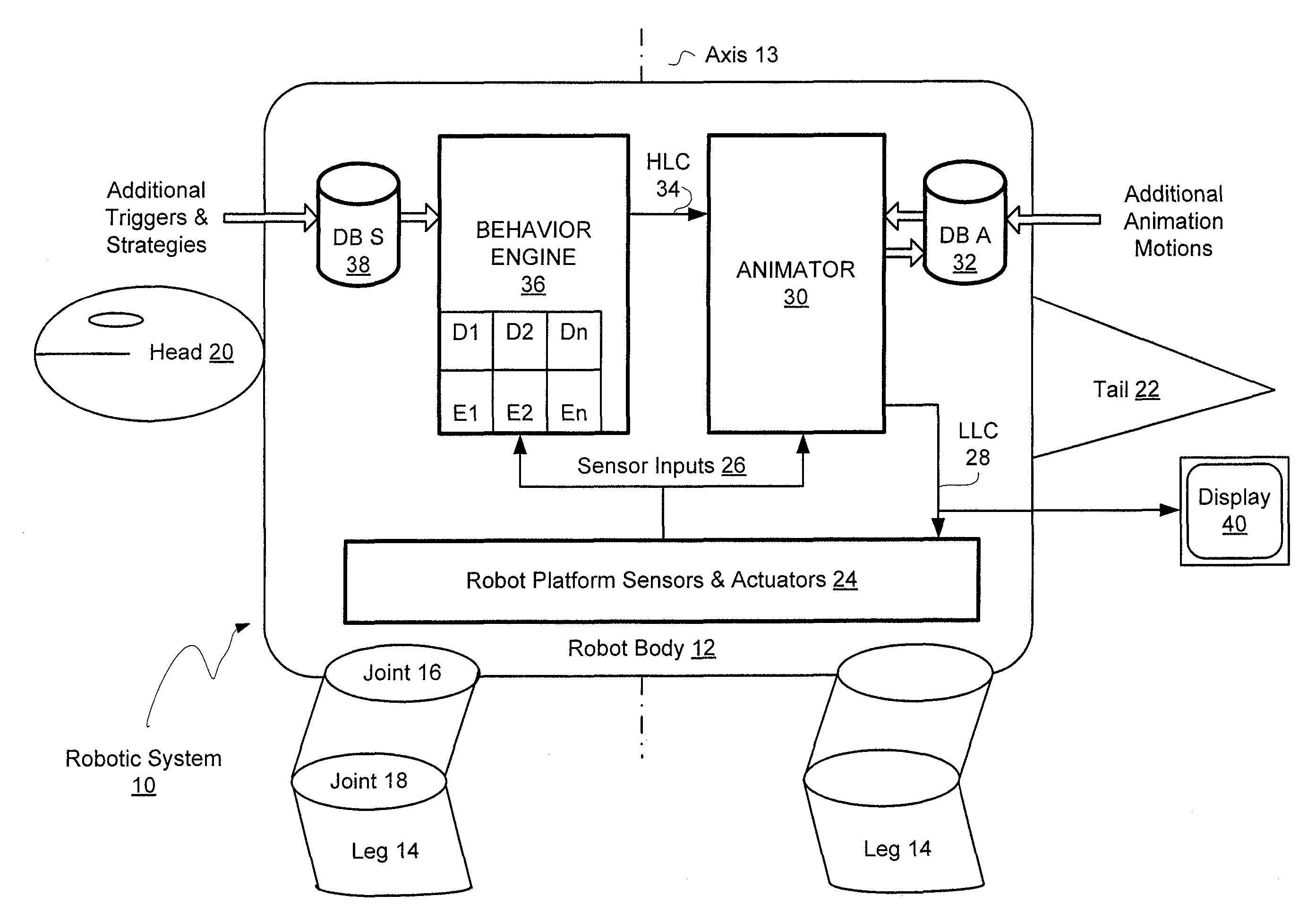Robots with autonomous behavior
a robot and autonomous technology, applied in the field of robots, can solve the problems of difficult or impossible to create robotic movement, require substantial investment in each development time and cost, and develop such algorithms
- Summary
- Abstract
- Description
- Claims
- Application Information
AI Technical Summary
Benefits of technology
Problems solved by technology
Method used
Image
Examples
Embodiment Construction
)
[0010] An improved technique for capturing motion files is disclosed in U.S. patent application Ser. No. 11 / 036,517, Method and System for Motion Capture Enhanced Animatronics, filed Jan. 13, 2005, and incorporated herein by reference, in which signals for causing life-like robot motions are captured from a system which may be constrained to perform in the same physical manner as the target robot. That is, the captured motion files are limited to motion files which recreate “legal” motions that can be performed by the target robot. For example, the center of gravity of the robot during such legal motions is constrained to stay within a volume permitting dynamically stable motions by the robot because the center of gravity of the robot is constrained within that volume by the system by which the motion files are created or captured.
[0011] At the heart of the new system are an easily expanded database of predetermined legal robot motions (e.g. motions that the robot can achieve with...
PUM
 Login to View More
Login to View More Abstract
Description
Claims
Application Information
 Login to View More
Login to View More - R&D
- Intellectual Property
- Life Sciences
- Materials
- Tech Scout
- Unparalleled Data Quality
- Higher Quality Content
- 60% Fewer Hallucinations
Browse by: Latest US Patents, China's latest patents, Technical Efficacy Thesaurus, Application Domain, Technology Topic, Popular Technical Reports.
© 2025 PatSnap. All rights reserved.Legal|Privacy policy|Modern Slavery Act Transparency Statement|Sitemap|About US| Contact US: help@patsnap.com


